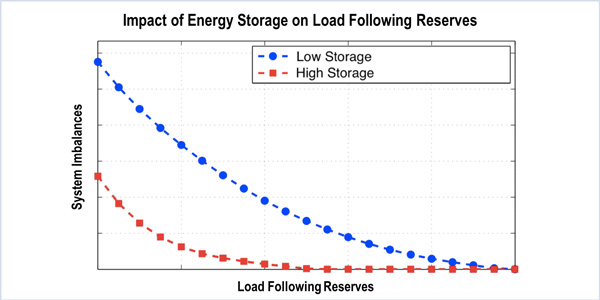WESTBOROUGH, Mass. — ISO-NE’s Planning Advisory Committee on Thursday hashed over technical details from about 95 stakeholder comments regarding the grid operator’s draft 2016 Scenario Analysis – Phase I Report.
“Two sets of comments concern carbon emissions and making some judgement on whether the region will meet the [Regional Greenhouse Gas Initiative] goals that are being promulgated,” said Michael Henderson, ISO-NE director of regional planning and coordination, as he reviewed the feedback during a Sept. 28 committee meeting. “Other comments concern the inverter-based resources (solar, wind, storage), which becomes more important with the growth of wind and the increased penetration of energy efficiency.”
The New England States Committee on Electricity wanted a disclaimer placed more prominently in the report saying, “The report and the hypothetical future scenarios are not plans, predictions or preferences.” The grid operator agreed to the request.
Scenarios, not Policies
Henderson emphasized that the report constitutes the RTO’s analysis of scenarios provided by the New England Power Pool — not an evaluation of state policies.
Bob Stein of Signal Hill Consulting Group said, “We have heard they are NEPOOL scenarios, but I don’t think NEPOOL endorses any of the scenarios, either.”
Joining by phone, David Ismay of the Conservation Law Foundation said, “The study would be more valuable to the region if it considered various state policies … what we’re getting at is a level of emissions that approximates goals.”
“The ISO is taking the proper approach,” said NESCOE’s Ben D’Antonio. “The idea here is to make sure the report is clear so people can understand it … keeping it straightforward and clear is right.”
The American Wind Energy Association complained that the report’s assumed wind development costs used out-of-date U.S. Energy Information Administration data.
“Our main concern is that transmission costs are too high by a factor of 10. Most obviously, there is a 50% ‘margin’ added to transmission costs which are already extremely high,” wrote AWEA’s Michael Goggin. “This assumption has a major impact on the results, since the transmission costs nearly as much as the wind generation in the scenarios with high levels of onshore wind.”
“I don’t think we are using the costs incorrectly, especially when you consider the interconnection costs for a wind farm in Maine can be extraordinarily higher than for one located right next to a major transmission line,” Henderson said.
Henderson added that the RTO didn’t just look at offshore wind and measure the shortest distance to shore to derive cost estimates.
“Transmission costs were the same issue and, again, they are order-of-magnitude estimates,” he said. “They proved remarkably accurate because they were part of the Maine wind integration study.” (See ISO-NE Files Cluster Study Rules; Window to Open in Nov.)
2027 Needs Assessment Scope of Work
ISO-NE senior transmission engineer Kaushal Kumar presented the assumptions and study methodology behind the 2027 Needs Assessment Scope of Work, a study produced biannually to provide insights into the system 10 years into the future.
The studies evaluate performance and identify reliability-based needs in six study regions, factoring in future load distribution, reliability over a range of scenarios, project coordination and the retirement or addition of major resources. They also apply all relevant transmission planning reliability standards from NERC, the Northeast Power Coordinating Council and ISO-NE.
Questioning Assumptions
One of Kumar’s slides contained a footnote saying that demand resource assumptions included 5.5% distribution losses. Stein asked where the figure came from, and also questioned the RTO’s assumption of cutting that loss to zero when modeling solar, contending that not all PV installations are located right next to load.
ISO-NE Director of Transmission Planning Brent Oberlin said the RTO’s modeling has long assumed an 8% energy loss, with 2.5% lost in transmission and 5.5% in distribution. But he added that he would consider refining the assumptions for PV’s reduction of distribution losses.
2017 Renewable Energy Integration Study Nears Completion
Professor Amro M. Farid, of Dartmouth College’s Thayer School of Engineering, briefed stakeholders on the scope of his team’s work on the grid operator’s 2017 System Operational Analysis and Renewable Energy Integration Study (SOARES).
The study focuses on regulation, ramping and reserves, and addresses the reduction in traditional thermal generation that provides the grid with inertia and other reliability services.
“We need to adopt a holistic way of looking at how renewable energy integration causes fundamental changes in grid dynamics and erodes the power grid’s overall dispatchability,” Farid said.
Methodologies used in past renewable energy studies operate on assumptions for which there is no supporting research, Farid said. Farid said the Electric Power Enterprise Control System simulator his group developed to address this need can more accurately study such things as the impact of energy storage on load-following resources and the RTO’s day-ahead unit commitment.
SOARES is a key element of Phase II of the 2016 NEPOOL Scenario Analysis/Economic Study. Farid expects to complete SOARES by the end of the year.
— Michael Kuser



